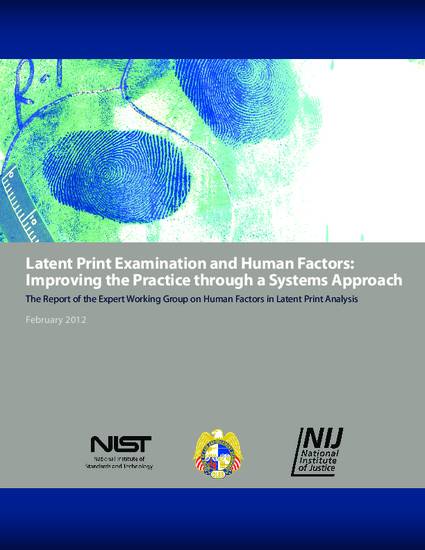
Other
Latent Print Examination and Human Factors: Improving the Practice Through a Systems Approach
(2012)
Abstract
Fingerprints have provided a valuable method of personal identification in forensic science and criminal investigations for more than 100 years. Fingerprints left at crime scenes generally are latent prints--unintentional reproductions of the arrangement of ridges on the skin made by the transfer of materials (such as amino acids, proteins, polypeptides, and salts) to a surface. Palms and the soles of feet also have friction ridge skin that can leave latent prints. The examination of a latent print consists of a series of steps involving a comparison of the latent print to a known (or exemplar) print. Courts have accepted latent print evidence for the past century. However, several high-profile cases in the United States and abroad have highlighted the fact that human errors can occur, and litigation and expressions of concern over the evidentiary reliability of latent print examinations and other forensic identification procedures has increased in the last decade.
""Human factors" issues can arise in any experience- and judgment-based analytical process such as latent print examination.
Keywords
- fingerprint examination,
- human factors,
- latent print analysis
Publication Date
February, 2012
Comments
This report was produced with funding from the U.S. Department of Justice's National Institute of Justice and in collaboration with the Law Enforcement Standards Office in the U.S. Department of Commerce's National Institue of Standards and Technology.
Citation Information
Expert Working Group on Human Factors in Latent Print Analysis, David H. Kaye, Thomas Busey, Melissa R. Gische, et al.. "Latent Print Examination and Human Factors: Improving the Practice Through a Systems Approach" (2012) Available at: http://works.bepress.com/scott-shappell/70/
